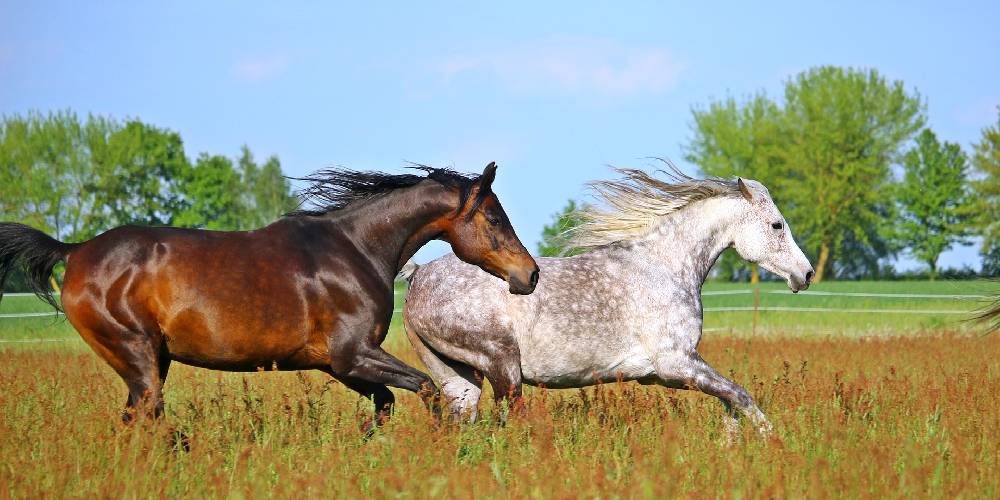Looking for signs to tell if your horse is healthy or not can be very important. You need to be able to look for and observe different things in your horse to understand your horse’s health condition and see if a veterinarian visit is necessary.
Signs That Your Horse Is Healthy In Its Physical Appearance
There are a few ways to determine if a horse is healthy or not just by looking at its overall appearance. There are many things you should check off before deciding that your horse is either healthy or unhealthy. The physical signs of good health in horses include:
A Shiny, Glossy Coat
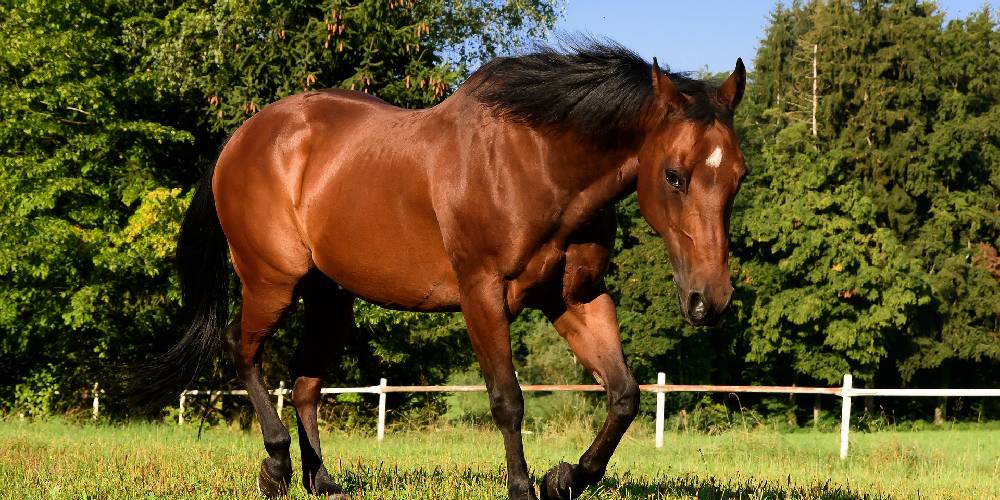
In horses, a shiny and glossy coat that lies flat against the body is a sign of good health. If a horse has a dull-colored coat that lacks any luster or shine, the horse is likely suffering from a health issue like Cushing’s disease, has a problem with parasites, or another issue that is causing the horse’s poor coat condition.
To help improve the health of your horse’s hair and coat overall, I recommend putting your horse on one or both of the following supplements:
- Biotin
- Flax Seed
Why? Because for biotin, it simulates keratin production which in turn not only helps the growth and health of the horse’s coat, but also helps with mane, tail, and hoof growth and health as well!
I recommend flaxseed because it is full of B vitamins which help the horse’s coat and hair grow stronger, shinier, and healthier than if the horse was off of it.
Bathing your horse regularly with shampoo and conditioner to keep their coat clean will also help to maintain that healthy sheen.
Smooth Moving Skin
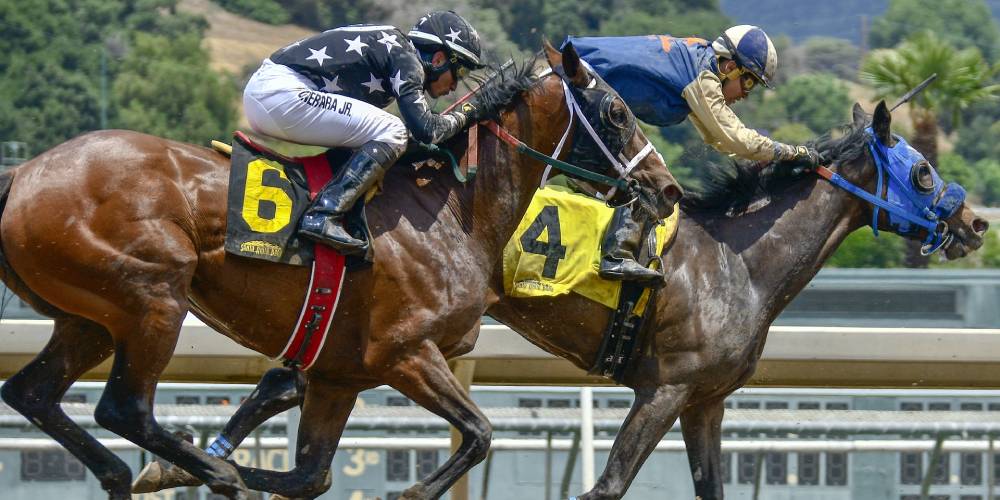
The horse’s skin should be a supple moving part of the horse that moves smoothly over the horse’s body with their movements and the flexing of their muscles. The skin not only moves over the horse’s body with ease, but it should also pass the skin recoil test.
The skin recoil test is a test that checks to see the level of hydration of the horse’s skin as well as its health. To do the test, pinch a piece of the horse’s skin between your thumb and finger. When you release the skin, the skin should immediately recoil back into its normal position. If the skin doesn’t recoil or if it recoils very slowly, you know that there is a problem.
To improve the condition of your horse’s skin, make sure to bather them regularly with shampoo and conditioner. This will not only help the health of your horse’s coat, but it will also help with the health of your horse’s skin.
Another thing I recommend to fix this problem is to make sure your horse is hydrated. A large part of why this happens in horses is dehydration. Supplying them with a salt or mineral block and giving them electrolytes can really help to solve this problem.
No Noticeable Swelling
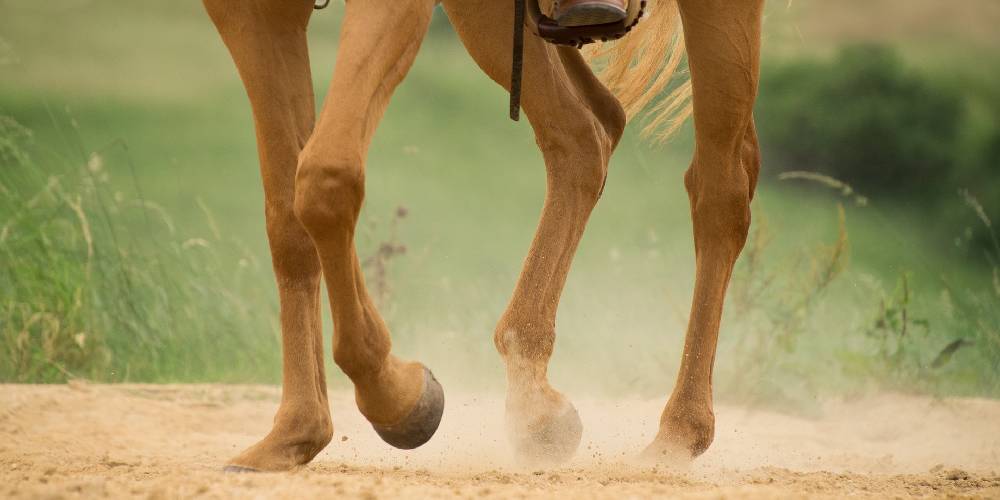
Swelling, especially on the horse’s legs, is something you really need to look out for when it comes to the physical health of horses. The saying ‘no foot no horse’ is definitely true so keeping an eye out for swelling, specifically in the legs, is an important thing to look for when determining the physical health of the horse.
If swelling is detected, keeping the site cool is the most ideal thing to do. If you feel the swollen area, you might notice that there is excessive heat in that area so cooling the area can help to reduce the swelling. There are a few things I recommend to help cool the horse’s legs and lower the swelling. Those things are:
- Putting Ice Boots On The Affected Area (assuming the swelling is on the horse’s leg)
- Dousing The Swollen Area With Rubbing Alcohol
- Putting Standing Wraps Or Polo Wraps On The Affected Legs (assuming the swelling is on the horse’s leg)
- Rinsing The Swollen Area With Cold Water
Pink Gums

Pink gums are a sign of good health in horses. If the gums are pink, it means that the horse has good blood circulation and is not going into shock.
Healthy pink gums should pass what is known as the capillary refill test. To do this test, lift your horse’s upper lip up to expose its teeth and gums. Then, press your finger onto the gums for a second or two before removing your finger. The blood should flow quickly back into the area where the test was done. If the gums are not pink or take a while to refill with blood then I would call the veterinarian as soon as possible. This is likely because the horse is going into shock or already is in shock due to another medical issue.
A Healthy Weight

You can’t call a horse a healthy horse if its weight doesn’t show that the horse is healthy! Make sure that your horse is neither underweight nor overweight and has a body score anywhere between 5 and 6!
You want your horse to have good muscle definition with no prominent bones or ribs showing through its skin.
To read more on the body scoring of horses click here to see if your horse is in a healthy weight category!
If your horse is underweight, keeping them active and giving them more food is a great way to get them back into a better weight category. My old horses for a time were underweight so I actually went ahead and bought them a weight-gain supplement that worked wonders in bringing them back to a normal and healthy weight.
Bright Alert Eyes
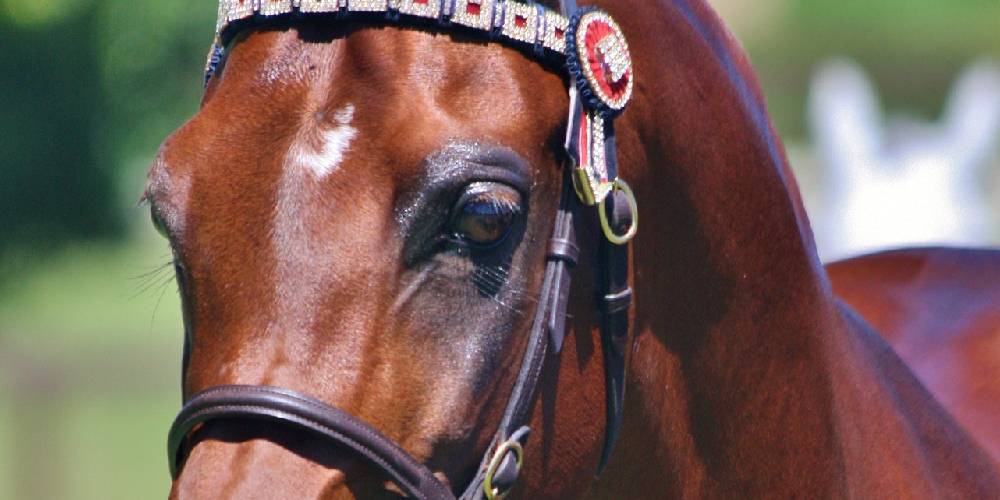
A healthy horse should always have bright, clear, alert eyes. You can tell that something is wrong with your horse if its eyes appear foggy, glassy, or unfocused. This is why you need to be very observant when looking for signs of health or illness as even the smallest things could tell you whether or not there is something wrong with your horse.
Bright alert eyes show that the horse is not focused on other things and that they are feeling good and happy. If a horse has dull or unfocused eyes, this could be a symptom of pain and your horse could be telling you that they are hurting.
Just because your horse has dull or unfocused eyes does not mean that they are unwell. Older horses begin to get clouded eyes as they age, so before panicking or calling your veterinarian, keep in mind the age of your horse.

